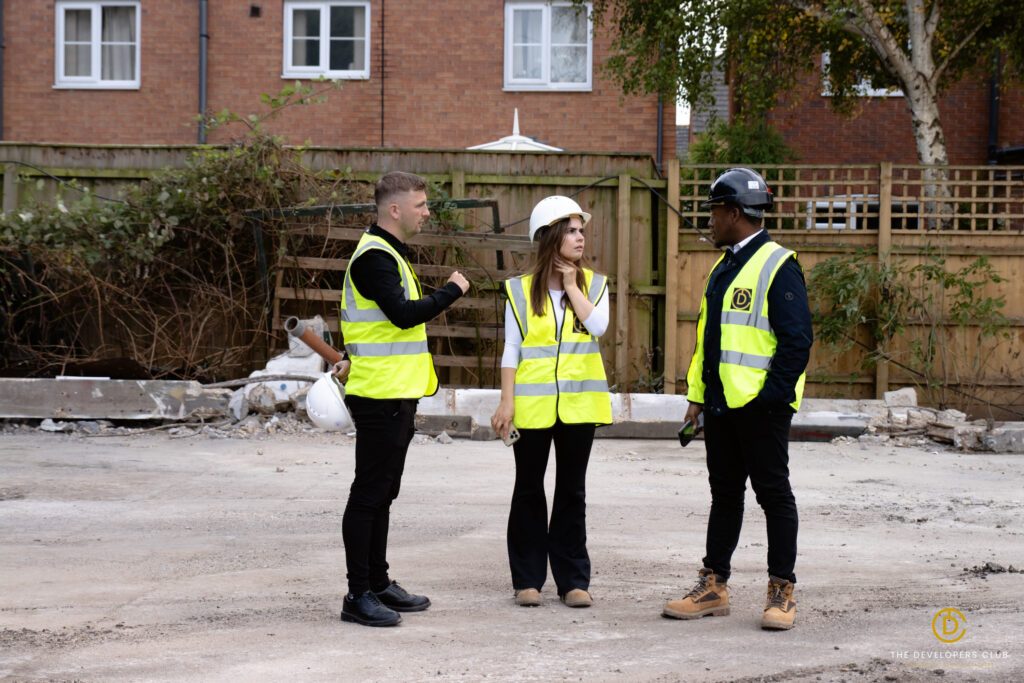EPC: Is It Just Another Tax on Developers?

Ryan Taylor
June 2025
Is sustainability just another layer of red tape — or a missed opportunity? In this candid post, a seasoned developer-turned-compliance-expert shares how early planning around EPCs and SAPs can protect your profits, avoid costly delays, and even unlock better finance terms. With EPC reform on the horizon, now’s the time to build smarter.
As someone who’s been developing property for years now — and now also runs a
compliance business — I’ve seen both sides of the EPC issues. I get the frustration,
because I’ve felt it too: Is sustainability just another tax on developers?
When I started developing, EPCs and SAP assessments felt like end-of-project
admin, a box ticking exercise conducted at the end of a project because I didn’t know
what I needed at the start (because my building control inspector didn’t tell me….
Anyway). But the more I’ve ran Sustainabuild, the more I’ve come to realise how high the stakes are when these things go wrong, or more specifically, when they’re not planned correctly and how avoidable many of the issues actually are.
With EPC reform on the horizon, there’s a real opportunity here for developers who
want to stay ahead — not by spending more, but by managing smarter and having a holistic approach.
How I’ve Learned to Stay Ahead (and Protect Profit)
One of the biggest mindset shifts I’ve had — and I see this in projects we support
through Sustainabuild — is that compliance isn’t something to bolt on at the end. It’s
something to build into your process early, so you’re not caught out later.
Here’s how I now approach it on my own developments, and what I recommend to
others in The Developers Club:
- Run your SAPs early — and update them as specs change. Specs always change. Have constant communication with your SAP assessor.
- Take plenty of photos! Not just for building control – ask your SAP Assessor what he needs pictures of to sign the build off.
- Work with consultants who understand your whole project, not just their isolated part. That’s when clashes happen — the most common being when air pressure results haven’t been carefully considered.
- Plan for end-stage testing early — yes, airtightness, sound and fire tests happen at the end, but if you don’t prep for them earlier, you’ll be paying for retests and remedial work when you’re least able to absorb it.
- Know what a good EPC rating is worth — Lenders offer better finance terms simply because our SAP model projected an EPC A. That adds real commercial value.
None of this is about gold-plating. It’s about sequencing and alignment — and not
having to explain to your lender or client why a compliance issue delayed you getting
paid.

What SAP Actually Measures — and Why That’s a Problem
For new builds, conversions and extensions, EPCs are calculated using
the Standard Assessment Procedure (SAP) — a desktop modelling tool. It generates
three core metrics:
- TER – Target Emissions Rate (CO₂ output)
- TPER – Target Primary Energy Rate (overall energy demand)
- TFEE – Target Fabric Energy Efficiency (heat loss through the envelope)
Here’s the problem I’ve seen: SAP heavily favours fuel cost over carbon. So a gas
boiler often beats an air source heat pump on paper, even if it’s worse for the
environment. That disconnect causes issues — especially when you’re working with
housing associations, ESG-led investors, or frameworks where carbon is the priority.
What’s Changing — and What That Means for Us
The government is now consulting on EPC reform. Based on what I’ve read and
heard through the industry, the changes could include:
- Additional metrics like carbon, energy use, and fabric efficiency
- A shift toward operational performance (similar to NABERS UK in commercial)
- Less emphasis on energy price assumptions, which skew the current system
This matters because EPCs may soon reflect not just what we design, but how our
buildings actually perform. I think that’s a good thing — but it’s going to demand
more joined-up thinking across the design and build stages.
Are We Being Asked to Do Too Much?
Honestly, it’s a fair question. We’re being asked to absorb more compliance, more
certification, and more responsibility — at a time when the economics of
development are under serious pressure. There’s always something; CIL, section
106, section 24, BNG. There’s always something. Sustainability can feel like that at
the minute, right?
But here’s the hard truth I’ve learned the expensive way: the cost of fixing
compliance late is nearly always higher than doing it properly from the start. TDC is
littered with stories to attest to this… maybe that’s you.
At Sustainabuild, I’ve seen developers lose deals, delay funding, or miss handovers
because of simple, preventable compliance errors — wrong ventilation rates,
forgotten air tests, EPCs that didn’t match SAPs. It doesn’t have to be like that.

Final Thought — From a Developer, For Developers
I built Sustainabuild because I wanted better control over compliance on my own
schemes — and now we support others across the UK who want the same. We’re
a developer-led compliance company, and that gives us a different lens. We know
the cost pressures. We know the timeline realities. We also know that the right
guidance, at the right time, can be the difference between hitting your goals or being
held back. If you think we can help on any of your current projects, feel free to reach
out.
